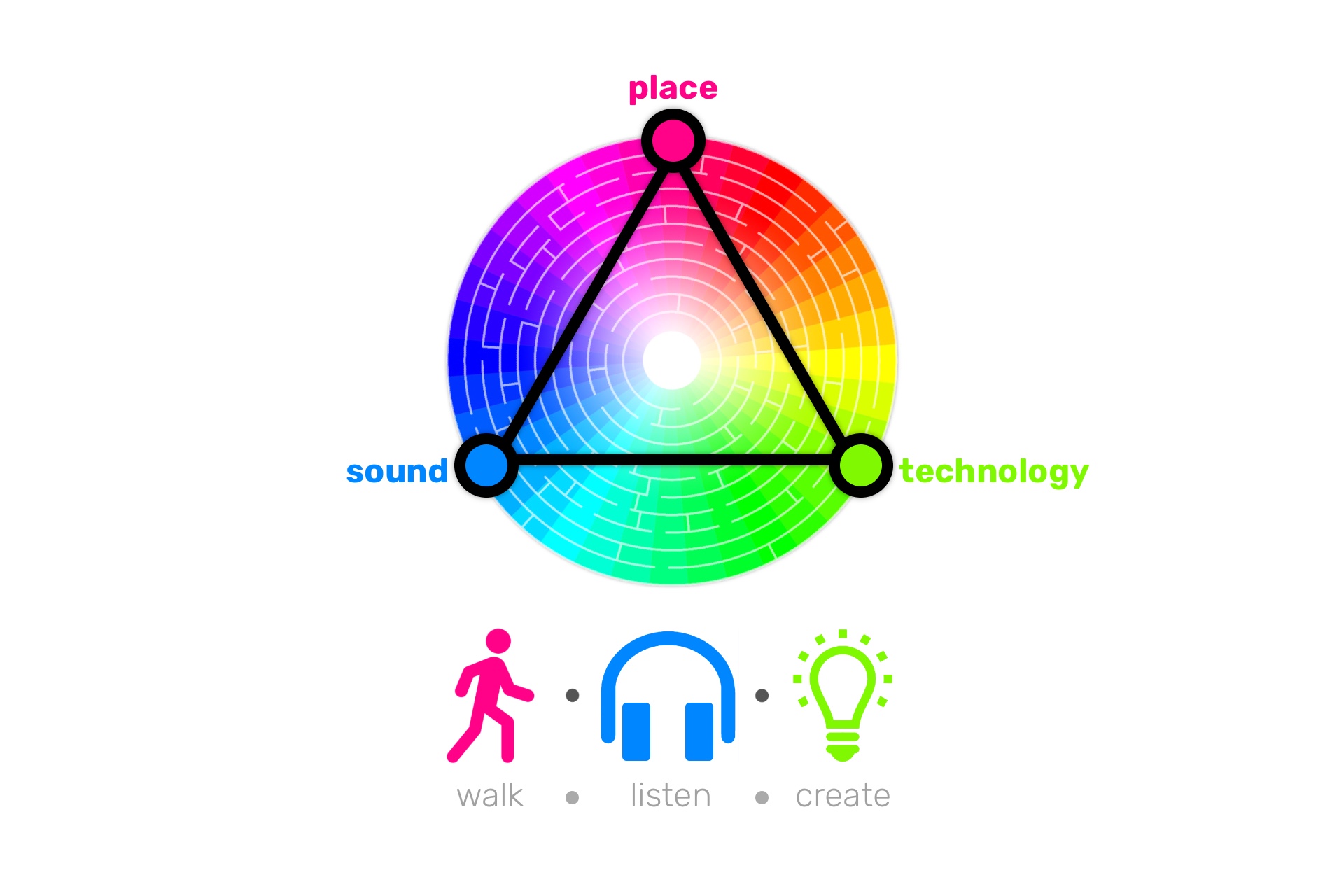Here at walk · listen · create, we are the home of walking artists and artist walkers. But, we have a soft spot for sound walks. Hence our Sound Walk September Awards.
But, what is a ‘sound walk’, really?
A sound walk, or walking piece, is any walk that focuses on listening to the environment, with or without the use of technology, or adds to the experience through the use of sound or voice. This can include a scripted or choreographed score or work that has additional audio elements.
Sound walks fall within the plain that is bounded by sound, place, and technology. The ‘technology’ could be a smart phone, pen & paper, anything that can be used as a tool, or no technology whatsoever.
In our FAQ, you find some examples of what this could mean in practice:
- A listening walk, as a live event.
- A listening walk, with instructions to enable someone to take such a walk independently.
- An audio-enhanced walking piece, as a live event, in which participants may be required to speak / sing / make music or sounds or listen to such elements.
- A walk, enhanced through audio, transmitted through headphones.
- A geo-located walking piece in which participants trigger recordings to which they listen via headphones.
But, really, in the end, it’s up to you. Check out our library of walking pieces for inspiration.


